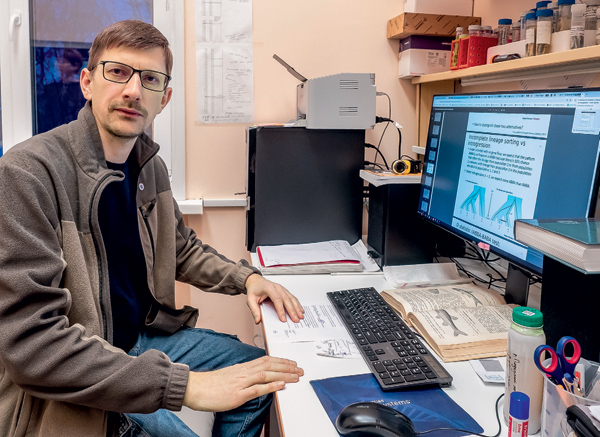
Boris Levin, PhD in Biology and leading researcher at the Institute of Ecology and Evolution of the Russian Academy of Sciences, gave an interview to the journal Science and Life about how speciation occurs, where it begins, and what stages it goes through.
- Boris Alexandrovich, you have been studying fish your entire scientific life…
— I started out studying the fish fauna of the Volga and Don in the watershed zone when I was still a student, and I defended my dissertation as a fish morphologist. Then I took up evolutionary developmental biology — modification of ontogenesis, when, by stimulating or suppressing the activity of the fish thyroid gland during early ontogenesis, we caused completely different states of phenotypes that could be attributed to different fish species, so different was their morphology. In the course of this work, we found a unique fish species that is hypersensitive to thyroid hormones (blue bream, Ballerus ballerus, from the Cyprinidae family). It lives in reservoirs of European Russia, in particular, we worked with blue bream from the Rybinsk Reservoir. When the blue bream’s natural level of thyroid hormones was measured, it turned out to be the lowest among all the fish species studied. Then we artificially increased the level of thyroid hormones in the blue bream larvae and obtained... a phenotypic analogue of another species - the white-eye, Ballerus sapa, which has a natural hormone level that is actually higher than that of the blue bream. Moreover, these two, although they are sister species (i.e. the closest to each other), differ significantly in nature in morphology, ecology, and even genetics. That is, there is no doubt that these are different species.
— Thyroid hormones, aren’t those hormones from the thyroid gland? Why did you decide to study them?
— Because they are very powerful morphogens, that is, compounds that affect the formation of organs and body parts. In our experiment with the blue bream, we discovered a mechanism according to which an evolutionary scenario could be realized in this line of fish. For example, if a mutation occurs that increases or decreases hormone production, this leads to a radical restructuring of morphology. In other words, a single mutation can lead to morphological changes at the species or generic level — in fact, macroevolution occurs. In general, the transition from micro- to macroevolution is not entirely clear; experts cannot yet determine whether there are clear boundaries here...
More details: https://nkj.ru/archive/articles/54522/
